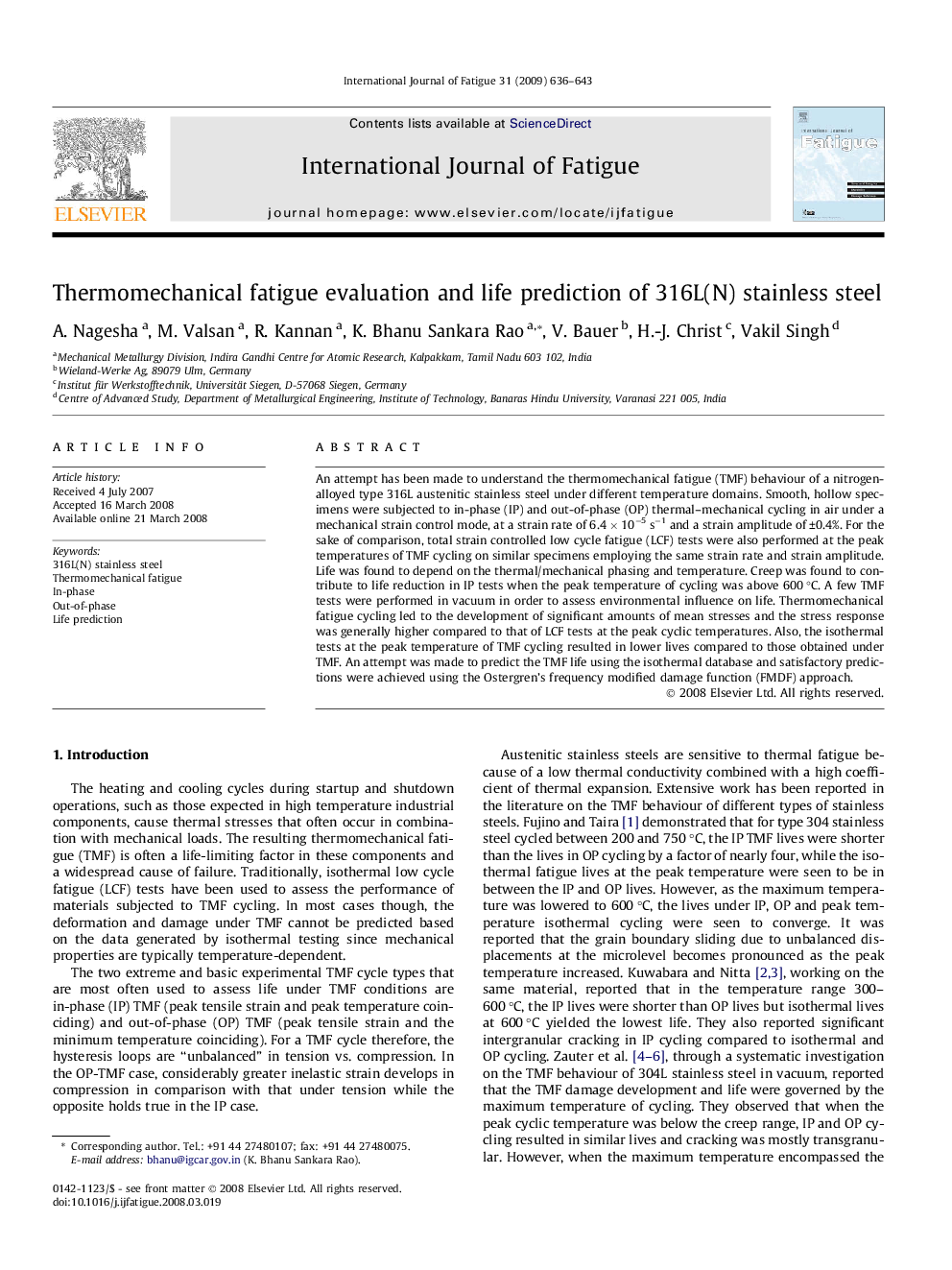| Article ID | Journal | Published Year | Pages | File Type |
|---|---|---|---|---|
| 781555 | International Journal of Fatigue | 2009 | 8 Pages |
An attempt has been made to understand the thermomechanical fatigue (TMF) behaviour of a nitrogen-alloyed type 316L austenitic stainless steel under different temperature domains. Smooth, hollow specimens were subjected to in-phase (IP) and out-of-phase (OP) thermal–mechanical cycling in air under a mechanical strain control mode, at a strain rate of 6.4 × 10−5 s−1 and a strain amplitude of ±0.4%. For the sake of comparison, total strain controlled low cycle fatigue (LCF) tests were also performed at the peak temperatures of TMF cycling on similar specimens employing the same strain rate and strain amplitude. Life was found to depend on the thermal/mechanical phasing and temperature. Creep was found to contribute to life reduction in IP tests when the peak temperature of cycling was above 600 °C. A few TMF tests were performed in vacuum in order to assess environmental influence on life. Thermomechanical fatigue cycling led to the development of significant amounts of mean stresses and the stress response was generally higher compared to that of LCF tests at the peak cyclic temperatures. Also, the isothermal tests at the peak temperature of TMF cycling resulted in lower lives compared to those obtained under TMF. An attempt was made to predict the TMF life using the isothermal database and satisfactory predictions were achieved using the Ostergren’s frequency modified damage function (FMDF) approach.
